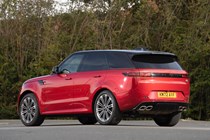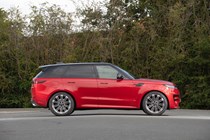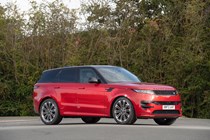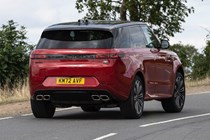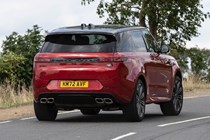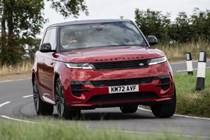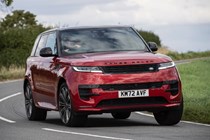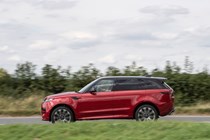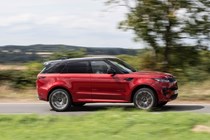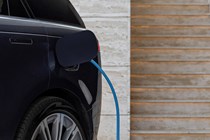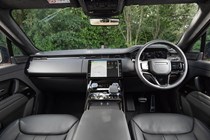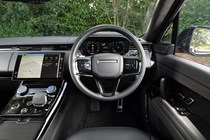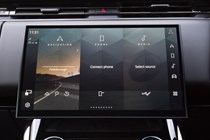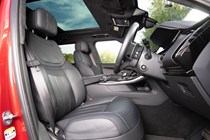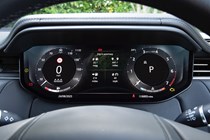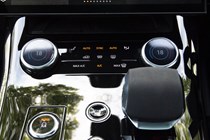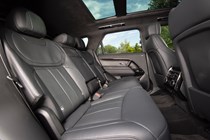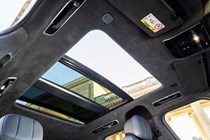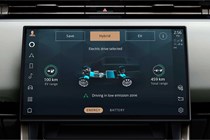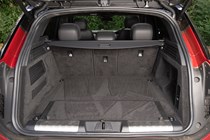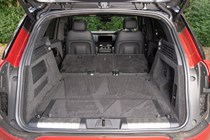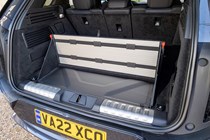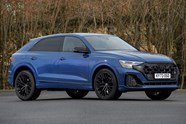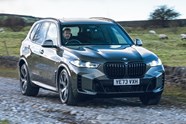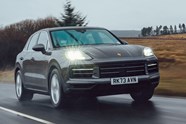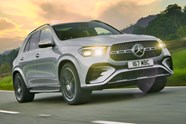
Range Rover Sport review
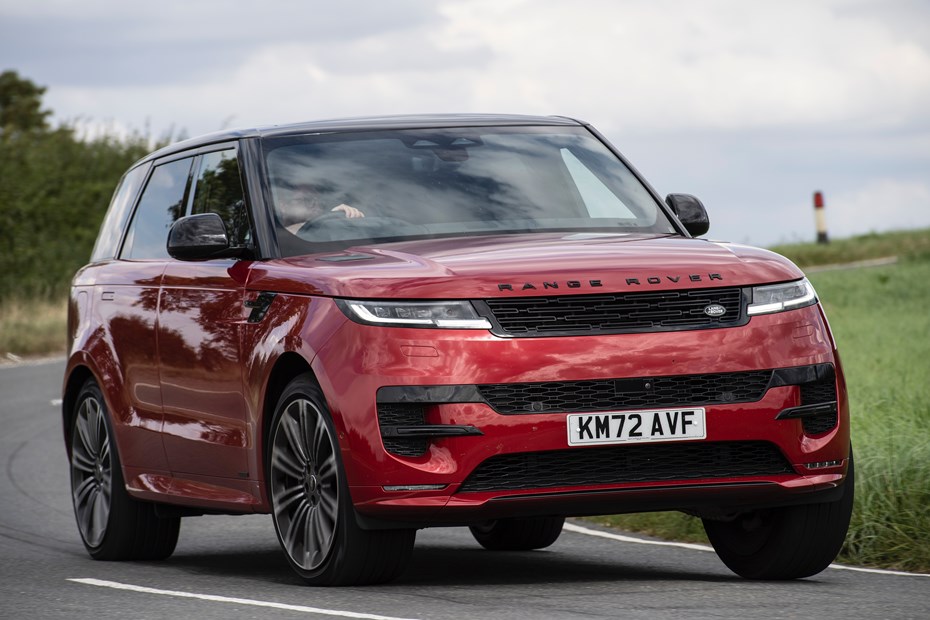
At a glance
| Price new | £77,460 - £174,545 |
|---|---|
| Used prices | £39,320 - £139,480 |
| Road tax cost | £620 |
| Insurance group | 44 - 50 |
Get an insurance quote with

|
|
| Fuel economy | 22.6 - 39.4 mpg |
| Miles per pound | 3.3 - 5.0 |
| Number of doors | 5 |
| View full specs for a specific version | |
Available fuel types
Petrol
Diesel
Hybrid
Pros & cons
- Remarkably good to drive for such a large car
- Classy image and impressive interior
- Plenty of engine options
- Prices have taken a big leap
- No fully-electric version yet
- No seven-seater option
Land Rover Range Rover Sport SUV rivals
Overview
This is the Range Rover Sport, the smaller and sportier brother of the full-sized, maximum-luxury, Parkers award-winning Range Rover. Both cars share engines, tech and interior fittings, which means the Sport could well be the best Range Rover of them all, as it’s cheaper, more agile and packed with cutting-edge SUV technology.
The latest, third-generation Range Rover Sport was launched in 2022. We’ve driven it many times since then in the UK and Europe – one of our testers took one on a road trip to the south of France. Check out how we test cars at Parkers to reach the conclusions given in this review.
The latest Range Rover Sport takes a massive step up from its predecessor, making it a serious contender for cars like the BMW X5 and BMW X6. There’s also the far sportier Porsche Cayenne to consider, and the Audi Q8 which is a more rakish alternative. However, the Sport approaches things differently to its German rivals, refusing to sacrifice luxury in its effort to provide greater dynamism.
The result is a car that may not be overtly sporty as its name suggests but is still very satisfying to drive. In fact, it’s up there with the very best luxury SUVs. There’s a plethora of engines available, including mild hybrid petrol and diesel straight sixes, a petrol V8, the 635hp SV, and a pair of plug-in hybrids.
The main difference between the Sport and the big Rangey is its simpler, less ostentatious interior, and the lack of a seven-seater option. That makes the Sport a tempting option if you don’t have a large family to cart about, especially as it costs about 20% less than big brother.
Different trim levels are available depending on what engine you opt for – they’re called SE, Dynamic SE and Autobiography. Even the entry-point SE comes well equipped with leather upholstery, 20-way heated seats, a Meridian sound system, Matrix LED headlights and 21-inch wheels.
Standard features and trim become increasingly lavish the further up the range you go. And the specification can be bolstered in just about any way you fancy. There are numerous options for interior upholstery and trim, an array of eye-catching exterior colours and the options list includes everything down to Land Rover-branded pet bowls to keep your canine companion happy in the boot.
Over the next few pages we’re going to score the Range Rover Sport in 10 key areas to give it a an overall rating out of five. Those scores include the driving experience, how pleasant the interior is, the practicality on offer and what it’ll cost you to run.



